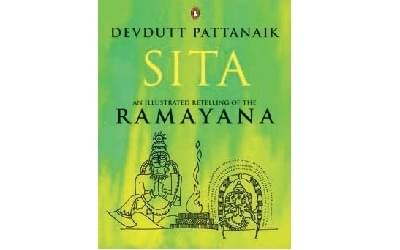Reviews
What I read in 2013
Abhinav Agarwal
Dec 22, 2013, 02:22 PM | Updated Apr 29, 2016, 01:08 PM IST
Save & read from anywhere!
Bookmark stories for easy access on any device or the Swarajya app.


I read fewer books in 2013 than I did last year (that would be 2012, because in a few days, “last year” would mean 2013, and all that!)
Let us start with Indology. I was supremely gratified that I not only got serious – or at least semi-serious – about the topic but also got to read about half a dozen really, really, finger-licking good books. Note to kids: do not try this at home; the finger-licking, that is. Reading? By all means.
Not all books were equally awesome, but many were very, very good. Land of the Seven Rivers, by Sanjeev Sanyal was the single best book in this genre that I read this year. I say “this year”, because The Lost River: On the Trail of the Sarasvati, by Michel Danino is even better, and by far the best book I reviewed this year. I say “reviewed”, because I read this book in January of 2012, but got down to reviewing only this year.
And while on the topic of the Saraswati River and the Harappan Civilization, I would be remiss if I didn’t mention The Lost City of Dvaraka, by S.R. Rao – perhaps the single most important excavation in the twentieth century, and written by the famed archaeologist who led that excavation – India’s first marine excavations to uncover the four thousand year old ancient port city of Dvaraka (modern day Dwarka).

Sanjeev Sanyal’s Land of the Seven Rivers, by Sanjeev Sanyal was on its own a wonderful book, and more so when you compare it with his first book – The Indian Renaissance: India’s Rise after a Thousand Years of Decline – that had its heart in the right place, but was dry and unengaging.
Then there was India’s Bismarck, Sardar Vallabhbhai Patel, by Balraj Krishna, a short but lucid account of the great Sardar Patel’s immeasurably invaluable contributions to a unified India. This book’s review was perhaps my most read review of 2013, gathering close to 300 Facebook “Likes” on Centre Right India.
As an honorable mention, journalist MJ Akbar’s Tinderbox: The Past and Future of Pakistan deserves to be included in the list of my notable reads of the year, though curious omissions and needless twists to events undermine the otherwise impressive sweep of history that it presented. As a complement to this book, I would add The Duel: Pakistan on the Flight Path of American Power, by Tariq Ali (I read and reviewed this book in 2012) and you have two very good books to understand the history and current state of Pakistan. Lastly, on this topic, while I read In Spite of the Gods, by Edward Luce a few years ago, I wrote a lengthy review of this awful book only this year. I say awful because it is a familiarly patronizing book written with a half-baked knowledge of India that tries to compensate with a full house of biases.

To finish off with Indology, there is the subject of mythology. My reading of the unabridged Mahabharata continued, with volumes 6 and 7 of Dr. Debroy’s translation (Mahabharata, Vol. 6, also “A Note on the Footnotes” and “The Battle at Night“; and Mahabharata, Vol. 7). These two volumes take the reader from the fateful thirteenth day of the war when Abhimanyu is killed to just after the end of the eighteen days of war when Bhima has defeated Duryodhana. Volume 8 has been delayed, but should hopefully release later this month or in January 2014.
That apart, I read the wonderful Sita: An Illustrated Retelling of the Ramayana, by Devdutt Pattanaik, which follows the wildly successful template of his earlier book, “Jaya“. Lastly, on this topic, there was The Missing Queen, by Samhita Arni, a modern day re-imagining of the Ramayana in the years after Sita was banished to the forest. It turned out to be a most disappointing read, where an obsessive Marxist feminist undercurrent drowns out a promising start.
For some reason, I don’t read too many fiction novels. Perhaps because I get my fill of fiction from the spin our media puts on events. Feeble at humour, sarcasm, and cynicism aside, I did read some works of fiction. The Demonologist, by Andrew Pyper took the crown of the unintentionally funniest fiction book of the year. Inferno, by Dan Brown reads like an annotated tourist guide to Venice and Florence, and with only the flimsiest of plots thrown in. Heck, five pages of Alistair MacLean novels used to have more plot than the entire oeuvre of Dan Brown, or so it seems.
Stephen King’s sequel to The Shining, thirty years later – Doctor Sleep – was certainly a standout book, and while it didn’t have the same hair raising creepiness of The Shining, it was still one helluva good read. Gone Girl, by Gillian Flynn was a mostly satisfying read, especially if you like psychopathic young women out for revenge. And yes, there was Coraline, by Neil Gaiman, that is a short and far creepier read than you would expect. Blindness, by Jose Saramago was another disturbing book, brilliantly imagined and crafted, though written in a style that puts you off after a while.
Children’s books are difficult work. The good ones, that is. Anyone who has read Roald Dahl will know that. So Waiting for the Biblioburro by Monica Brown was good, and Spring is Here, Big Bear, by Will Hillenbrand is guaranteed to bring a smile to your lips, no matter when you read it, The Book of Story Beginnings, by Kristin Kladstrup turned out to be a case of flattering to deceive. The middle part of the book just collapsed under its own heady start. But Coraline, by Neil Gaiman (yes, I know I’ve already listed it) was a rollicking good read.
You need a little bit of the sciences also. You know that unnecessary, complicated, geeky stuff. On the one hand there was “Enterprise Analytics: Optimize Performance, Process, and Decisions Through Big Data“, by Thomas H. Davenport, et al – the kind of book that people read to delude themselves into thinking they know something about Big Data. I will be kind and not say any more. My reviews of the book says a lot more. Much of it is not very nice.

On the other hand, and by far the best book on math I read in all of 2013, there was The Joy of x, by Steven Strogatz – not because that was the only math book I read, but it is a stunningly simple book that actually makes you want to know and learn more about math. And that is one freaking admirable achievement. And yes, Steven Strogatz liked my review of the book.
Finally, a couple of notable non-fiction books in this list. The White Man’s Burden, by Winthrop Jordan is an absolutely spectacular and accessible introduction to the origins of racism in the United States. Mohammed Rafi – My Abba – A Memoir, by Yasmin Khalid Rafi is a loving reminiscence of the great playback singer by his daughter-in-law, though I suspect the book is better read in its original Hindi language – it loses somewhat in the translation.
So, here’s my top 10 list for 2013:
Top 10, did I say? Maybe next year, after I read some math books. And 10 is not an adamantine and fast number, is it? I do hope that the word “adamantine” returns to the preserve of the pedantic by next year.




